Sleeping under the stars is a great way to reconnect with nature and recharge. Driven by the desire to create an experience, where nature plays a major part, architects develop bespoke dwellings that blur the lines between indoors and outdoors and offer breathtaking views of the sky above us, with its myriads of stars and thoughts of the unknown.
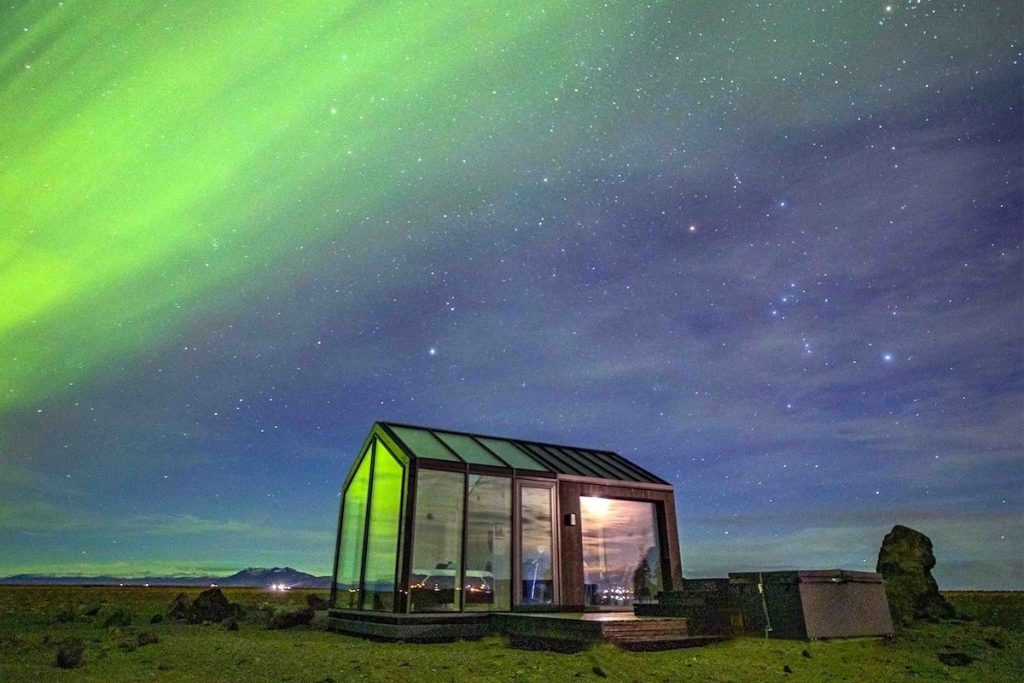
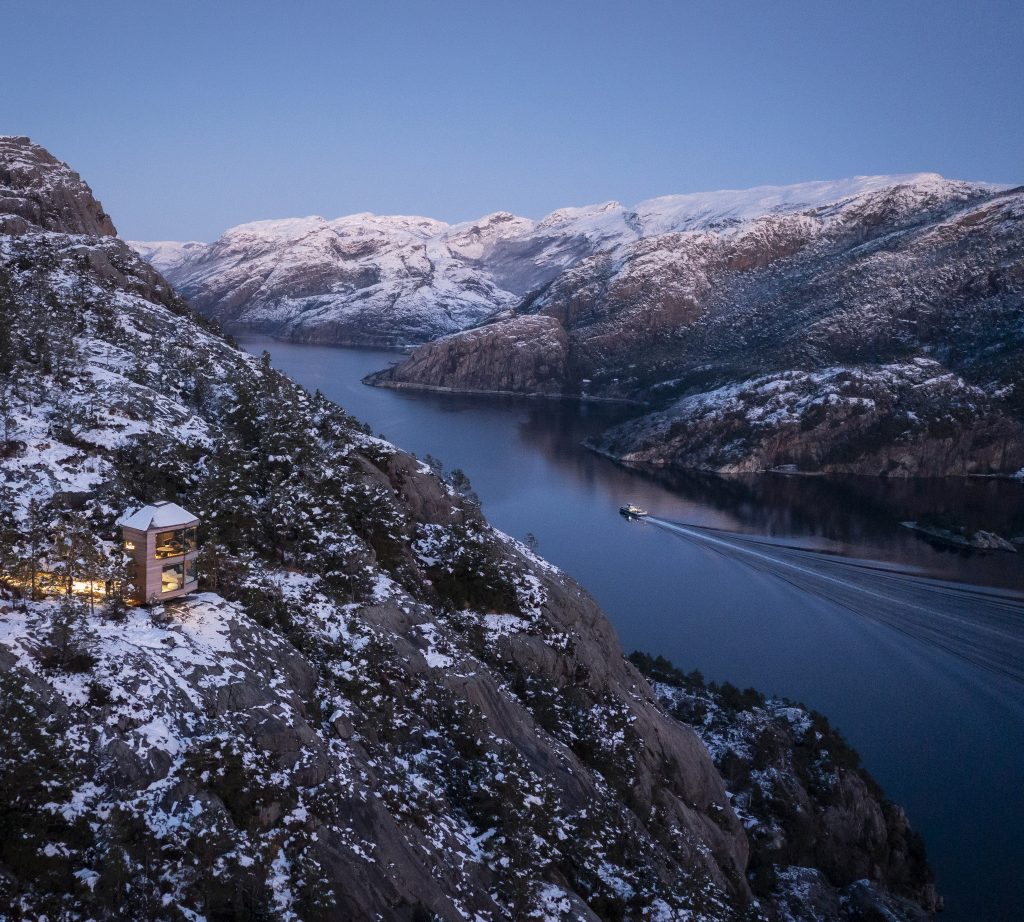
The Bolder by Snøhetta
Norwegian architecture studio Snøhetta has been working with local, Norwegian entrepreneur Tom Bjarte Norland to develop a unique accommodation on the edge of Lysefjorden on the Norwegian west coast. The goal was to create a total experience for the visitors – coming back to a cozy, warm wooden nest with a spectacular panoramic view after a day of hiking along the fjord.
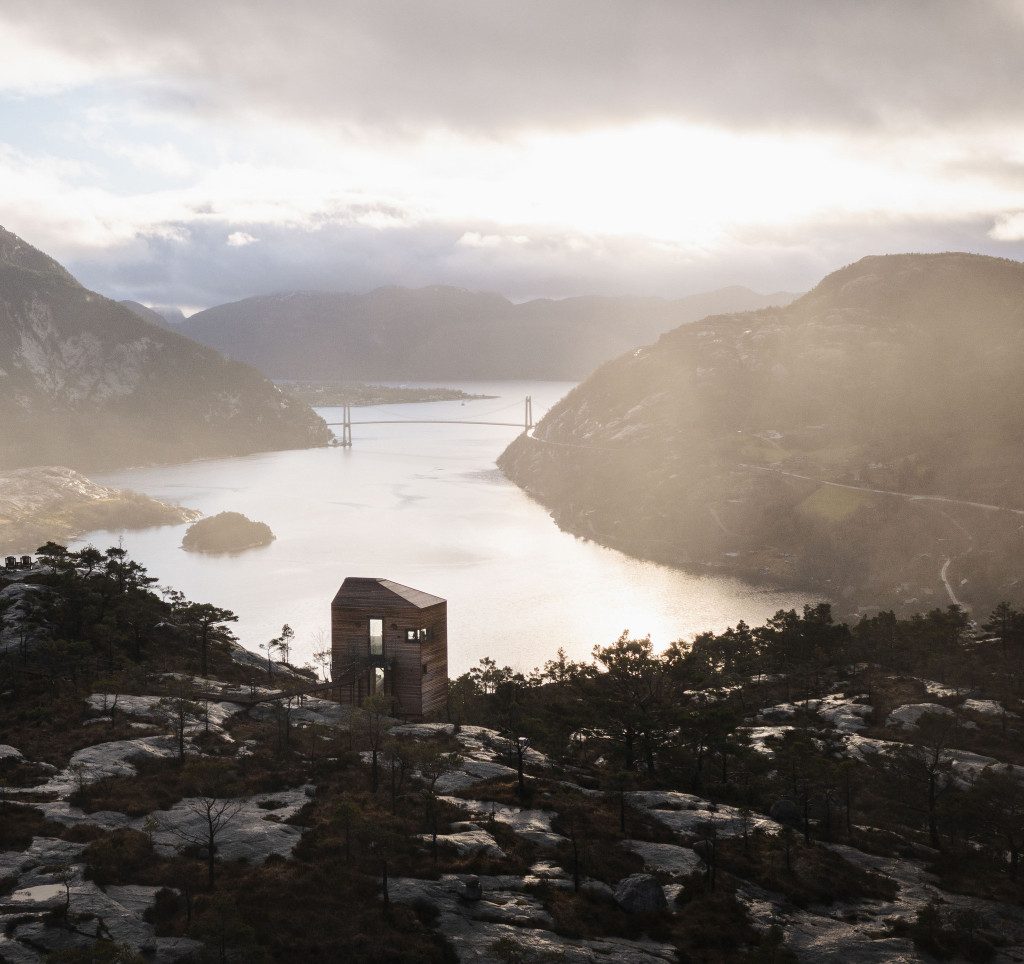
The Bolder by Snøhetta
The Bolder project consists of four cabins lifted over the ground designed to harmonize in the best possible way with the surrounding nature, below the tranquil sea and between the jagged mountains. The four cabins, named Stylten (Norwegian for Stilt), Myra (Marsh), Stjerna (Star) and Eldhuset (Firehouse) are lifted above ground on large concrete pillars and have glass facades to bring the outdoors inside. When stepping inside, guests are left with the illusion of floating in the air on the cliff’s edge with unobstructed views over the fjord and mountains covered with slow-growing pine trees and boulders left by the ice age glaciers.
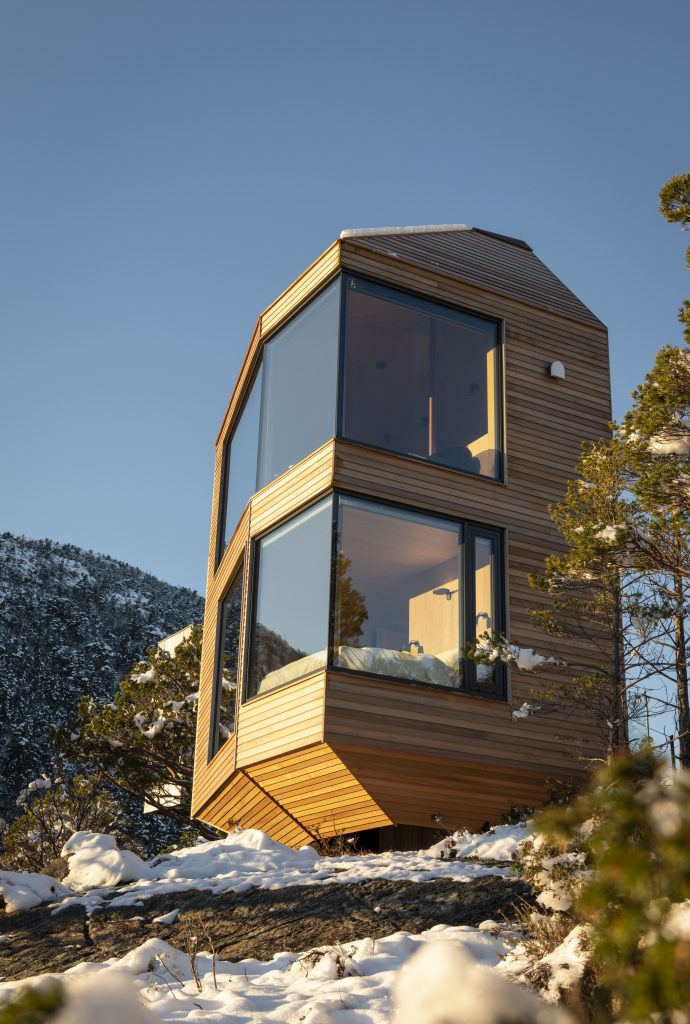
The Bolder by Snøhetta
The choice of construction materials helps further blur the boundary between the indoors and outdoors. To reflect the surrounding nature, dominated by granite and pine trees, Snøhetta chose to work with wood and concrete with aggregate from the actual site as the primary materials for the project. The wood used to build the cabins is untreated red Cedar that will gray with time, creating a natural look and allowing the lodging to blend into the rocky landscape.
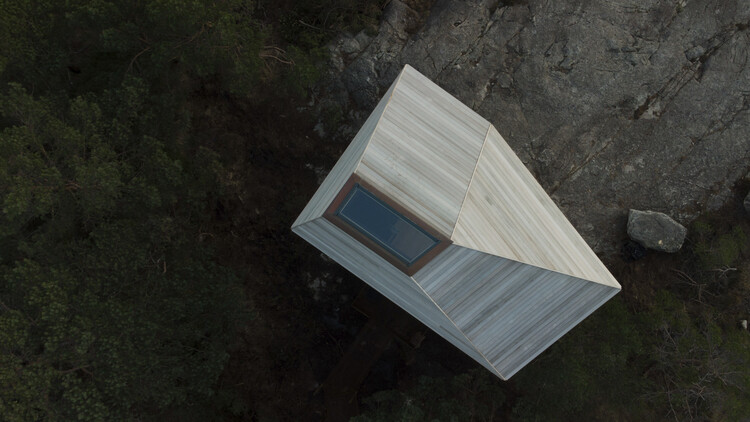
The Bolder by Snøhetta
Large glass panels, as well as the skylight that mirrors the cabin’s concrete base both in size and in placement, help occupant to always keep contact with the sky. Also, thanks to this solution, the structure appears to be hovering above the edge.
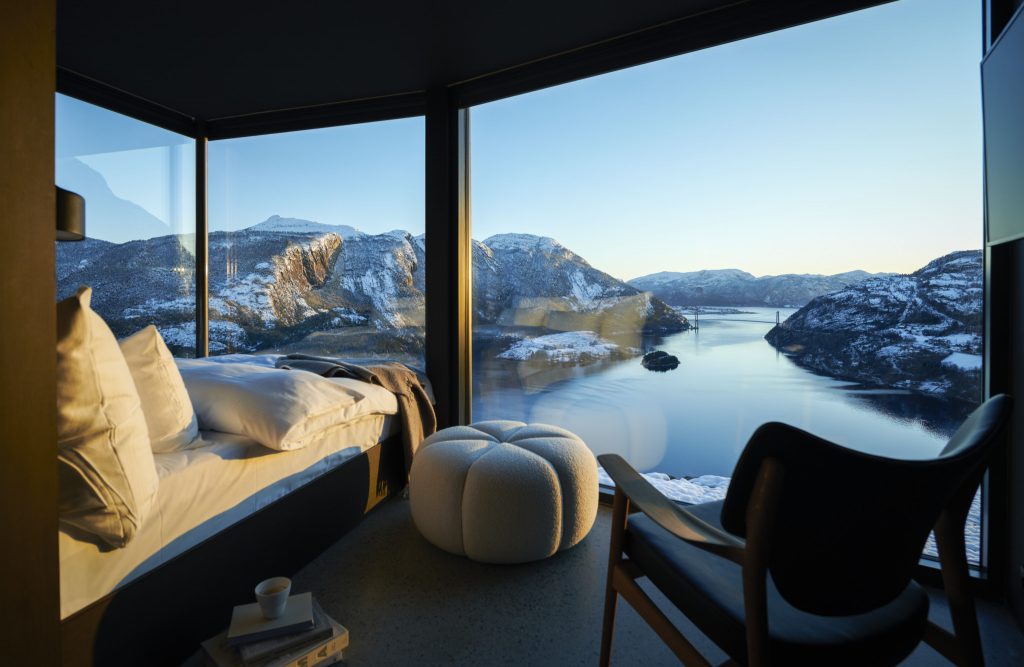
The Bolder by Snøhetta
All four cabins are fully equipped. Except for electricity powering the light and the amenities in the cabins, the site is off the grid. The naturally sourced spring water coming out of the treatment plant under the parking is cleaner than the water in the local river running over the mountain.
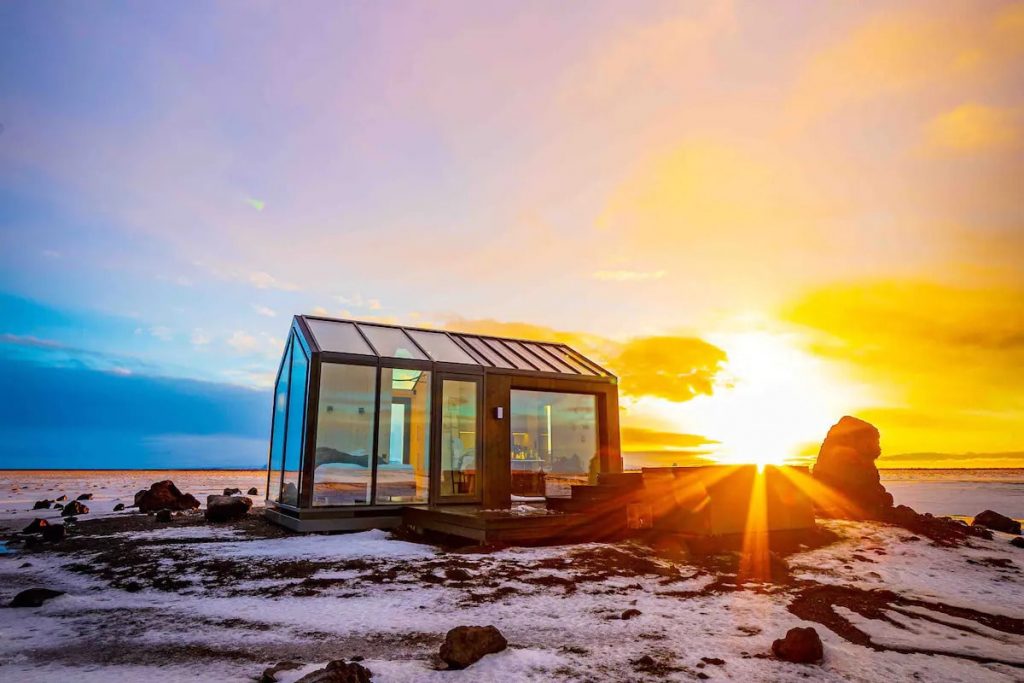
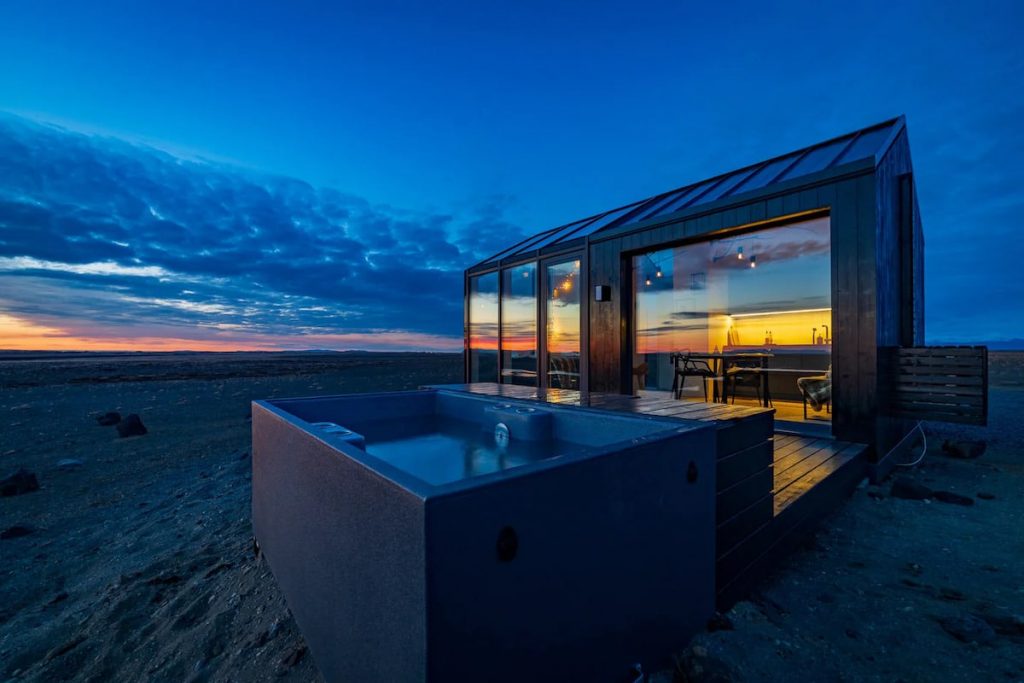
Grænn and Blár cottages (also header image)
Located in a lava desert in the Icelandic town of Hella, glass cottages nicknamed Grænn (Icelandic for Green) and Blár (Icelandic for Blue) let visitors not only spend a night watching stars from the comfort of the indoors but also allow for clear views of breathtaking Northern Lights. The names of the dwellings themselves are informed by the qualities of the surrounding landscape, with its blue lagoons and ice caves and green hues of the Aurora Borealis.
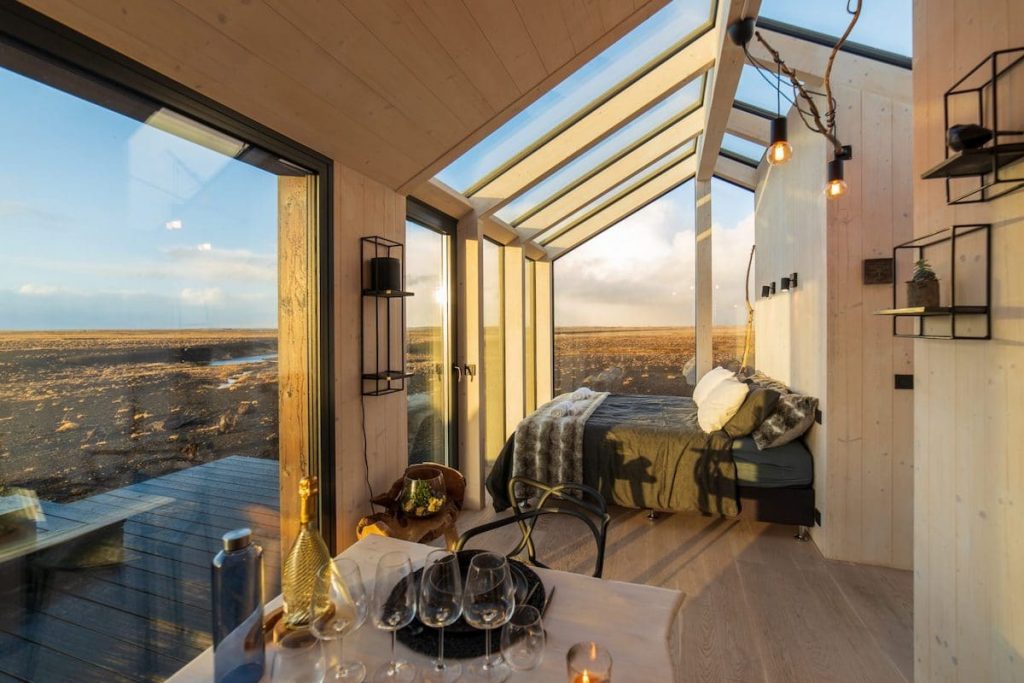
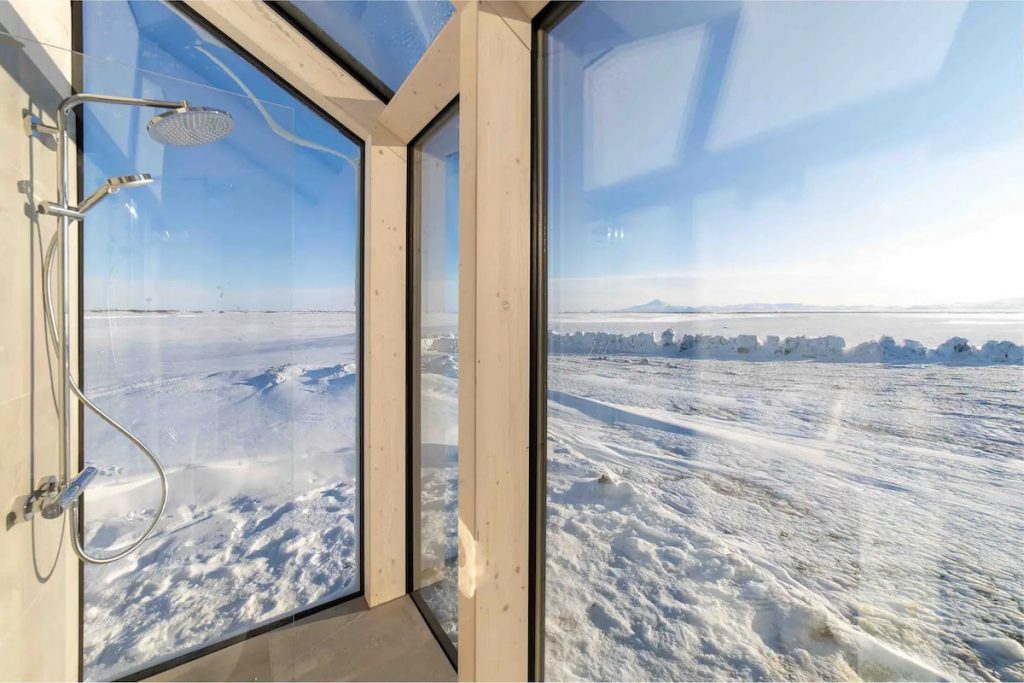
Grænn and Blár cottages
As the property’s name suggests, the cottages are made of glass and iron. Inside, each modern and chic home features a full kitchen and small dining table, along with a queen-size bed offering unobstructed views of the surroundings. Even showering from the cottage is a unique experience where full-height glass allows you to stay connected to the landscape with a view of Iceland’s largest volcanoes.
The glass cottages are available for short-term rental through Airbnb.
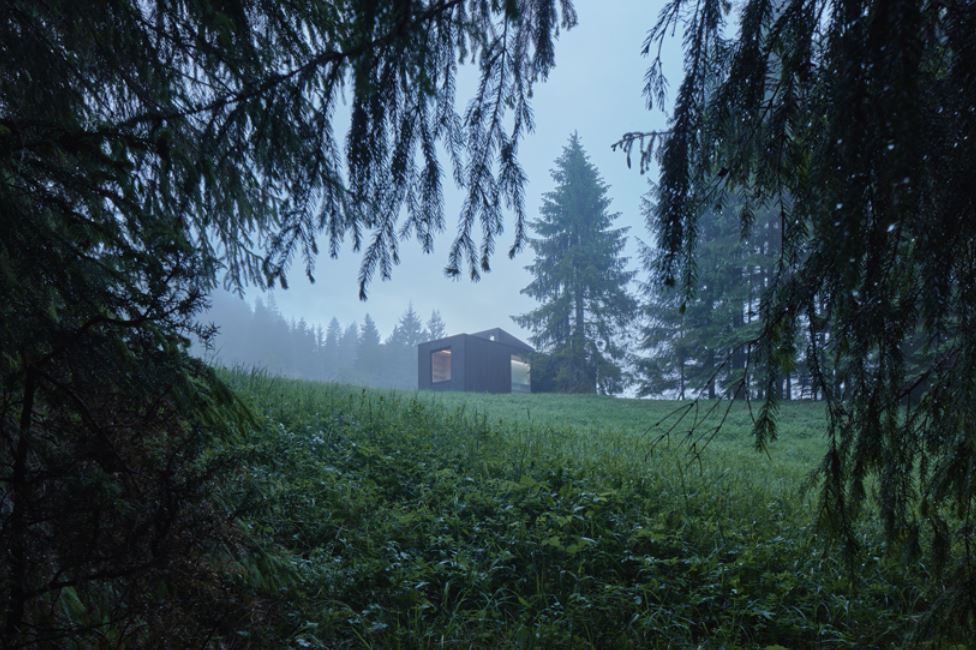
Ark-Shelter by ARK
After three years of re-designingm building and testing different prototypes of prefabricated cabins that can be placed anywhere within nature, Belgium-based studio ARK has developed Ark-Shelter.
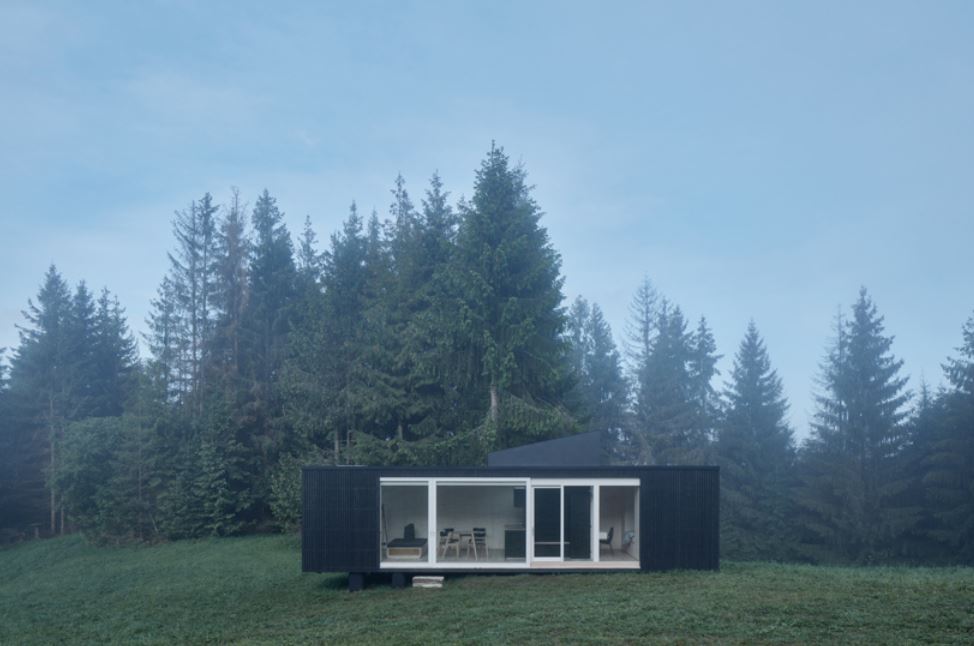
Ark-Shelter by ARK
Surrounded by openings on each of its five sides, the 40 sqm dwelling offers the occupants multiple states of enclosure, allowing for total exposure to the surrounding landscape. Sliding doors and walls help transform the space in an array of different ways. For example, by opening the side wall and front window, one might get the feeling of lounging outside. In the meantime, a module set into the roof acts as a large skylight, letting natural light in during the day and allowing the dweller to sleep under a sky full of stars at night.
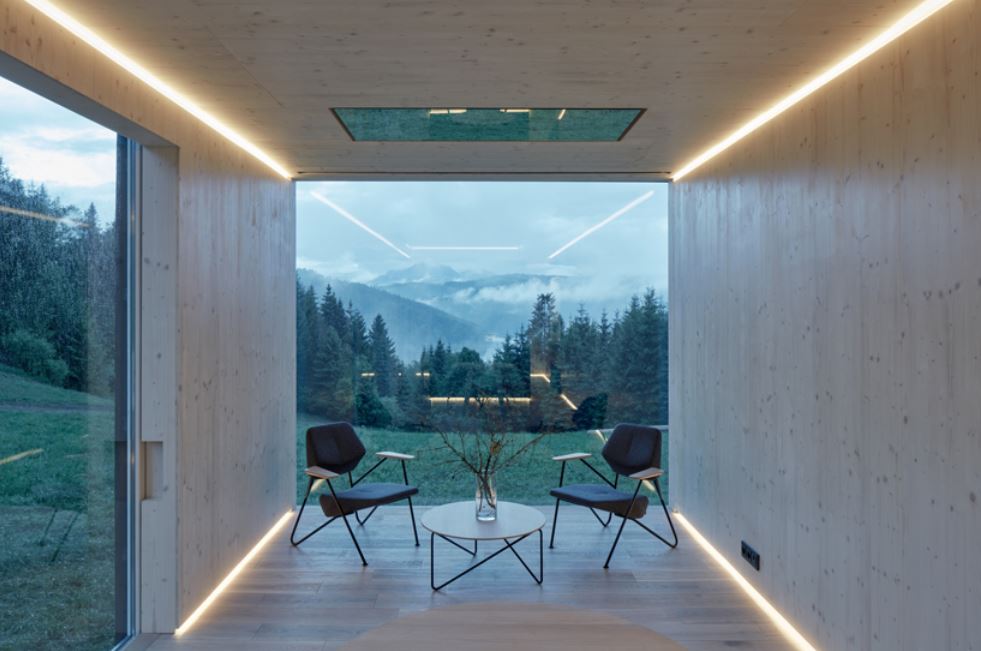
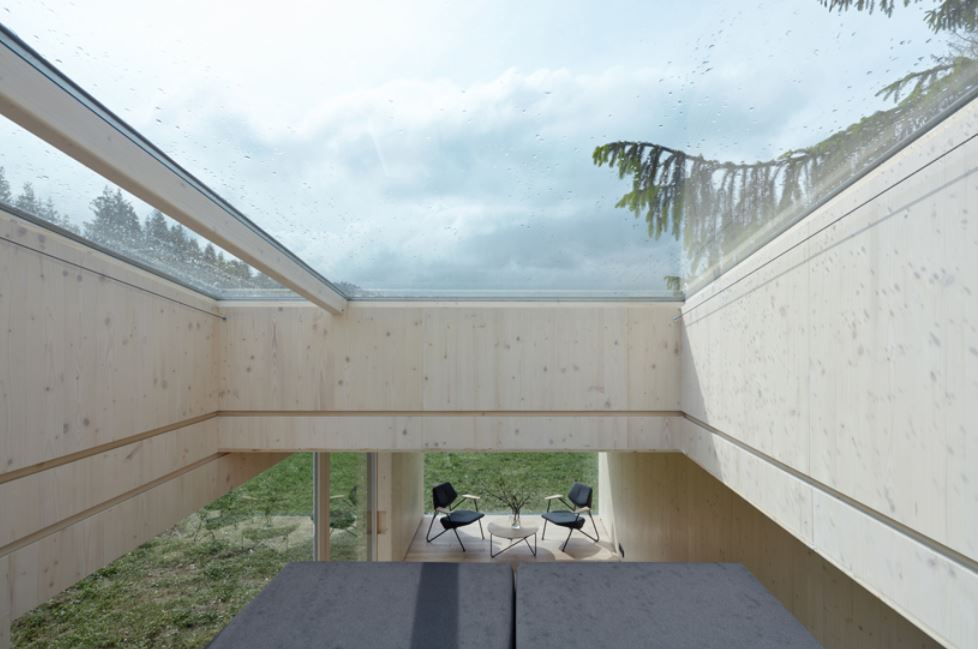
Ark-Shelter by ARK
Designed to appear unobtrusive when placed “into the wild,” the cabin works completely off-grid. Ths has been made possible using such sustainable features as solar panels, batteries and a rainwater collector.